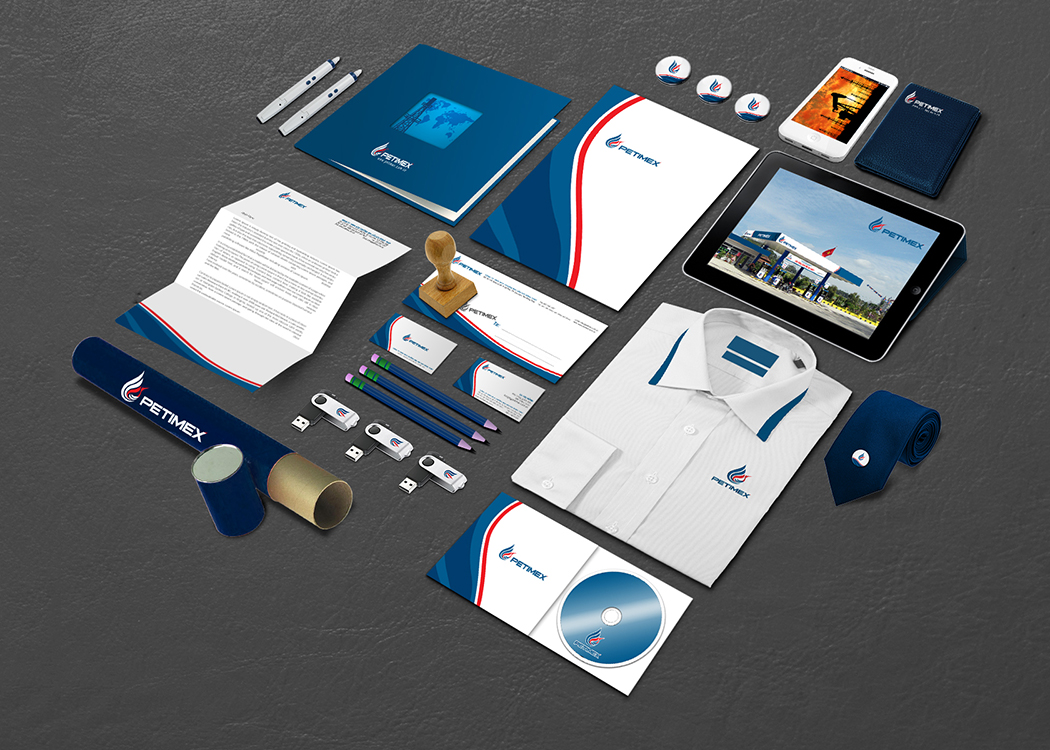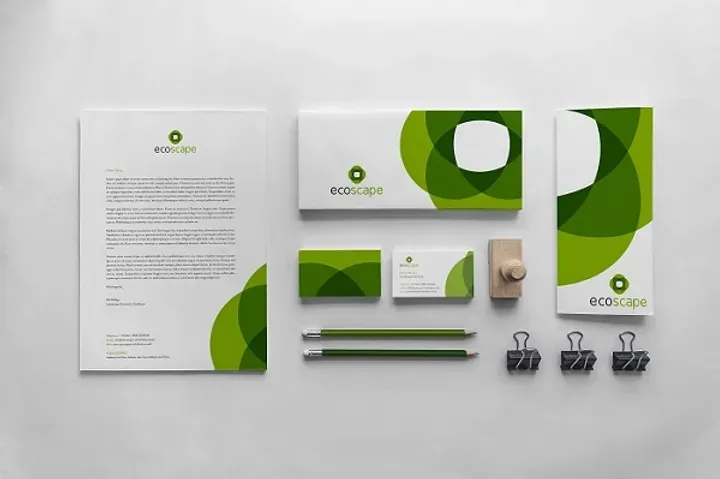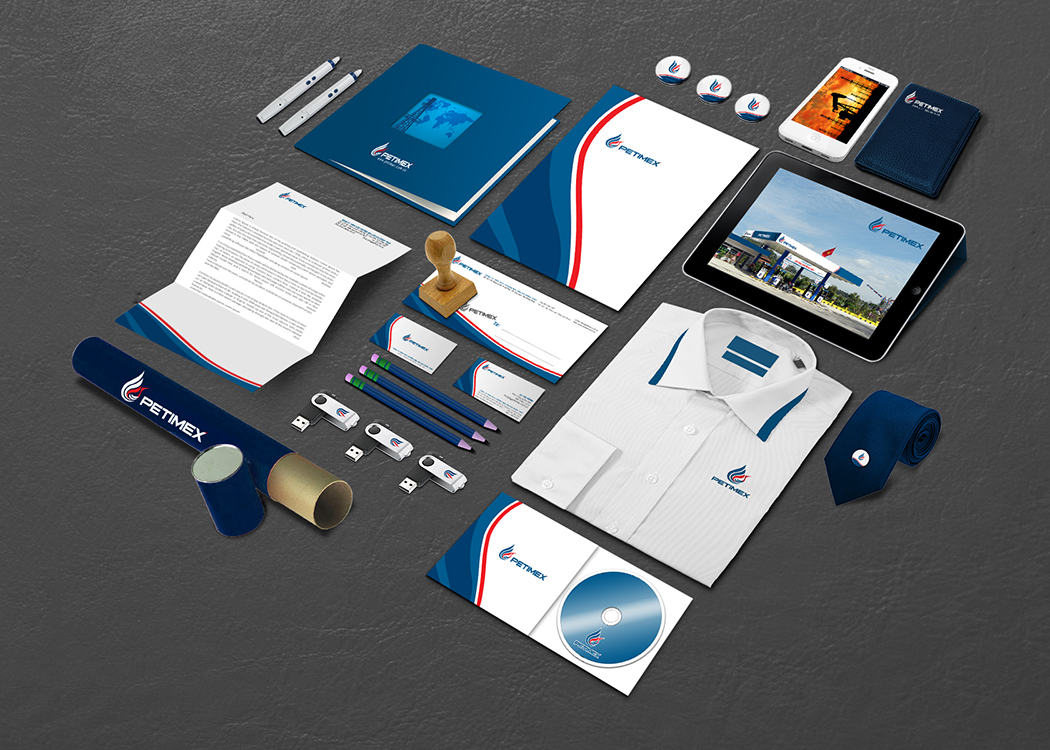Best Selling Products
Brand Identity Design: The Secret to Business Success
Nội dung
- 1. Learn About Brand Identity
- 1.1. Four basic brand identities
- 1.2 Important Role
- For this identity will have an important role in the design field as follows:
- 2. Basic Components of Brand Identity
- The basic components of a brand identity in design include logo, colors, typography, slogan and accompanying graphic elements.
- 2.1 Logos and Symbols
- 2.2 Color Palette
- 2.3 Font
- 2.4 Office Publications
- 2.5 Digital Interface
- 3. How to Design an Effective Brand Identity?
- 3.1 Define Brand Personality
- 3.2 Ensuring Consistency
- 3.3 Optimizing Flexibility
- 3.4 Hire a Professional Team
- 4. Long-Term Benefits of Brand Identity
- 4.1 Building a corporate brand
- 4.2 Building Customer Trust
- 4.3 Effective Marketing Support
How to design a brand identity helps businesses build an impressive image. Read now to know in detail the important elements in design!

Designing a brand identity is not simply creating a logo or business card. It is a process of building a unified image, expressing the identity and values of the business. Join Sadesign to learn how to optimize every element to create a professional and effective identity.
1. Learn About Brand Identity
A brand identity is a collection of visual elements, colors, typography, and design that are used consistently across materials and communications. Its goal is to clearly communicate the brand's core values and personality to customers.

1.1. Four basic brand identities
The brand identity system includes all visual touch points for customers. Therefore, each business will have a different identity system, but in general, it will still include 4 basic characteristics:
Core Brand Identity
The core brand identity is the most important foundation in building a brand's image and value. It includes basic elements such as: Logo, slogan, main color, and characteristic font. These elements not only help the brand become recognizable. Besides, it also conveys the message, core values, and unique personality of the business to customers.

A professionally designed core brand identity will create consistency across all communications, from advertising publications, product packaging to online platforms. This will help build customer trust and loyalty to the brand.
Office brand identity
Office branding is an important part of building a professional and consistent image of the business. It includes elements such as: Logo, business cards, letterhead, envelopes, email signatures and other office documents. These elements not only help to identify the brand easily. At the same time, it also shows the professionalism, prestige and unique style of the business in the eyes of partners and customers.

A uniform and creatively designed office brand identity will contribute to enhancing brand value. At the same time, it creates a strong impression in daily communication activities.
POSM brand identity
Point of sale (POSM) branding is an important part of a business's branding strategy. It is a set of visual elements used at the point of sale. The purpose is to attract customers' attention and create an impression of the brand.
POSM includes many items such as: Standees, banners, posters, product display shelves, light boxes, signs and other advertising items. These elements not only help enhance brand recognition but also promote customers' purchasing decisions right at the point of sale.
The design and implementation of POSM must ensure consistency with the overall brand image. At the same time, it must be suitable for the space and characteristics of each specific point of sale.

Brand Identity on the Internet
Online brand identity is an important part of a business's branding strategy in today's digital age. It includes elements such as: Website, logo, brand colors, fonts and other graphic elements used on online platforms.
In addition, a consistent presence on social media, email marketing and other digital channels also plays an important role in creating a professional and trustworthy brand image. The design and implementation of the brand identity on the Internet must be done carefully. And ensure that it is consistent with the core values and messages that the business wants to convey to its target customers.
1.2 Important Role
For this identity will have an important role in the design field as follows:
- Make a mark: A strong identity helps a business stand out in a competitive market.
- Increase recognition: Consistency in imagery makes it easier for customers to remember the brand.
- Reduce advertising costs: Professional images help increase brand value, reducing the need for large investments in promotional campaigns.
2. Basic Components of Brand Identity
The basic components of a brand identity in design include logo, colors, typography, slogan and accompanying graphic elements.
Other graphic elements such as: Icons, illustrations or layouts also contribute to shaping the style and creating a unique highlight for the brand. All these elements need to be coordinated harmoniously to build a professional and impressive brand identity.

2.1 Logos and Symbols
A logo is the central, visual representation of a brand, helping to create recognition and recall in the minds of customers. A good logo should be simple, easily recognizable, and flexible across a variety of platforms, from print to digital.
2.2 Color Palette
Colors and typography are carefully chosen to reflect the brand’s personality and core values. They also create consistency across communications materials. Colors are not just aesthetic, but also symbolic, evoking specific emotions. For example: Blue: Trustworthy, professional; Red: Passionate, dynamic.
2.3 Font
Fonts should be consistent with your brand identity. Sans-serif fonts are often chosen for a modern look, while serif fonts are traditional. Slogans serve as short, concise messages that convey the brand's vision or outstanding values.
2.4 Office Publications
Including business cards, envelopes, and letterhead. Each of these elements needs to ensure consistency in design, creating professionalism in communication with partners.

2.5 Digital Interface
Website, Facebook cover and media images need to be designed in a consistent manner to support brand recognition in the digital environment.
3. How to Design an Effective Brand Identity?
To design an effective brand identity, it is necessary to focus on building a consistent system of images and messages. It reflects the core values and vision of the brand.
First of all, it is necessary to thoroughly research the target market, competitors and customer characteristics. The purpose is to ensure that the identity not only stands out but also suits their tastes and needs.
Elements such as logos, colors, fonts and images need to be designed to be easily recognizable and create a strong impression. At the same time, these elements need to be applied consistently across all communication channels. And the product also plays an important role in reinforcing brand recognition.
Finally, always check and update your identity to ensure that it stays relevant to market trends and business growth.
3.1 Define Brand Personality
Before designing, businesses need to clearly define what message they want to convey. Brand personality can lean towards luxury, friendliness, or creativity. It will depend on the target customer.

3.2 Ensuring Consistency
All elements of your identity should be aligned. A clear set of guidelines for colors, fonts, and logo usage is essential to maintain consistency.
3.3 Optimizing Flexibility
The design needs to be easily applicable across multiple platforms while remaining clear and professional.
3.4 Hire a Professional Team
If the business does not have experience, hiring a professional design agency will help ensure quality. Experts will know how to create an identity that fits the market and business goals.
4. Long-Term Benefits of Brand Identity
An effective brand identity does more than just deliver short-term value. It also delivers important long-term benefits to your business.
4.1 Building a corporate brand
A professionally designed brand identity system helps build a consistent image. It creates trust and memorableness in the customer's mind.
This not only helps businesses attract new customers. Secondly, it also maintains regular interest from existing customers.
Furthermore, a strong brand will create a competitive advantage in the market. It helps businesses easily expand, attract investment and enhance brand value in the long term. Investing in brand identity design is a smart strategy. This provides a solid foundation for sustainable business development.

4.2 Building Customer Trust
Professional images help create trust, encourage customers to return and stay long-term.
4.3 Effective Marketing Support
A good identity makes advertising campaigns easier, saving costs and time. A strong brand not only attracts customers but also attracts potential investors.
Conclude
Brand identity is not just a small part of a marketing strategy. Investing properly in brand identity design will bring great benefits in the long run. Start today to build a memorable brand!












































